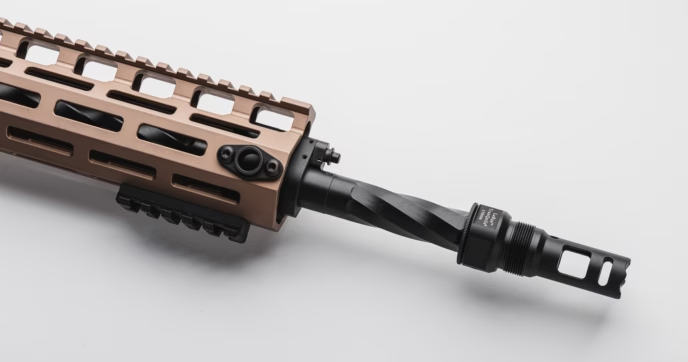Picture this: you’re out at the shooting range with your buddies when the RSO calls out that the range is cold. You walk down range to set up your new target when suddenly you hear a gunshot. Someone just had a negligent discharge and, thankfully, no one was hurt. But what if someone was? What do you do in that situation?
Situations like that are exactly why you should have a dedicated gun range first aid kit. While range safety officers do their best to keep everyone safe, negligent discharges are still one of the most common causes of gun-related accidents. It’s important to be prepared for whatever situation arises.
Do you have a first aid kit? Do you know what supplies you’d need to include? We’re here to go over everything you should include in your kit. Let’s get started:
Let’s get down to basics:
So, what is a first aid kit? In its most basic form, a first aid kit is a bundle of medical supplies used to treat wounds when they occur. In general, it’s a great idea to keep a first aid kit on you or around you for whenever you might need it.
While they all function the same, different kits can be made to fit different scenarios. For example, you might not need everything you’d carry in your hiking first aid kit, then you would in a gun range first aid kit. There are a lot of first aid kits available; Here are some of the popular choices:
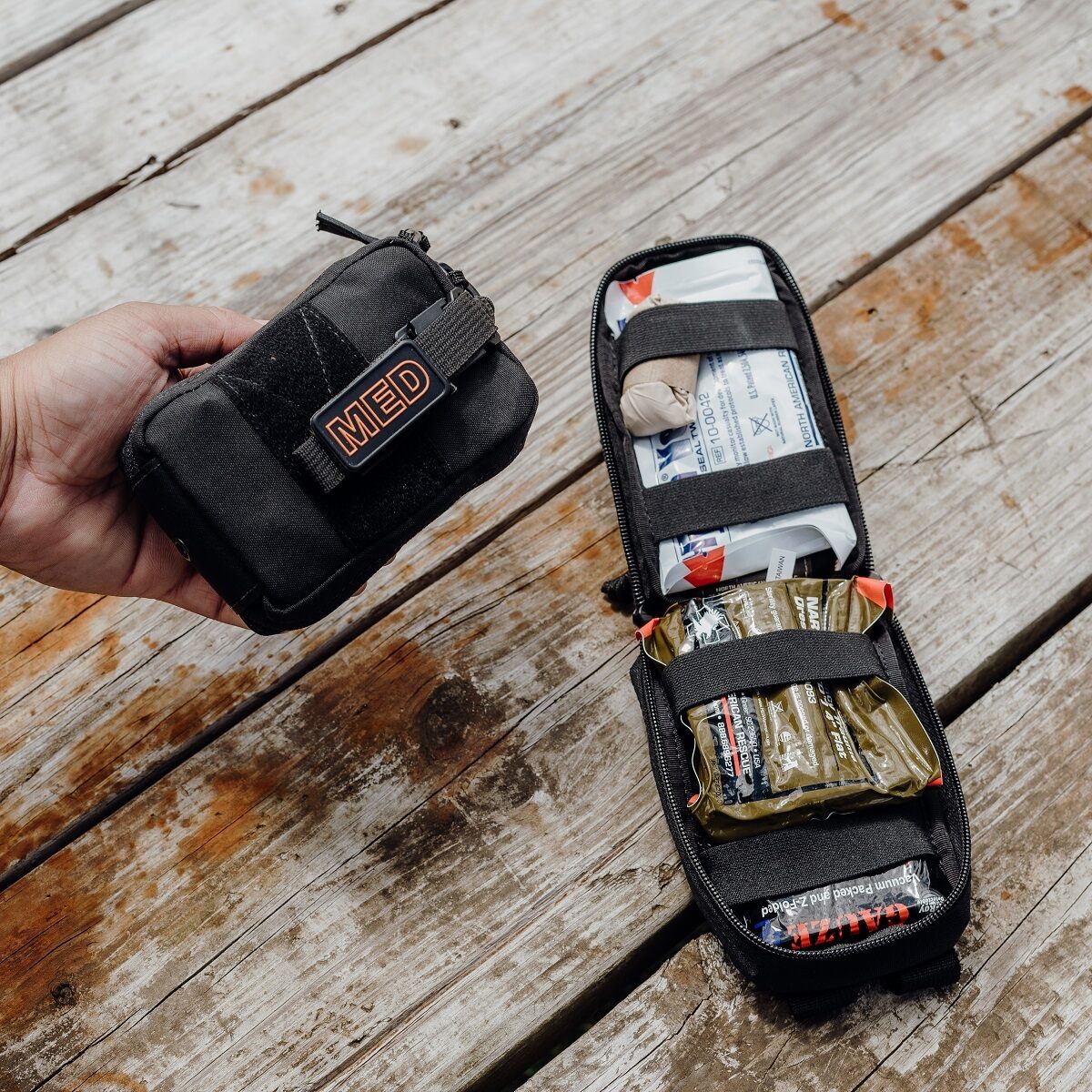
IFAK (Individual First Aid Kit)
IFAK’s are perfect for treating yourself or another individual use. A modern IFAK kit contains supplies you may find in a trauma kit. Before the term “IFAK” was introduced, they were issued to soldiers to treat any wounds or illnesses they may receive in the field. Nowadays, they are still issued to soldiers as part of their kit and purchased by civilians to keep in case of emergencies. It’s also easy to build your own IFAK and we have a blog all about that.
IFAK’s are a great choice to keep on-hand in case you need to treat yourself or someone else. Most of the time, they are pre-packed with a tourniquet, trauma shears, multiple gauze packs, disinfectant, bandages, and sometimes stitches. As stated previously, these kits are great for trauma treatment and can be the difference between life and death sometimes. Something to note, while these kits contain a lot of useful supplies, they can be a bit overkill for everyday use, but great for a range kit.
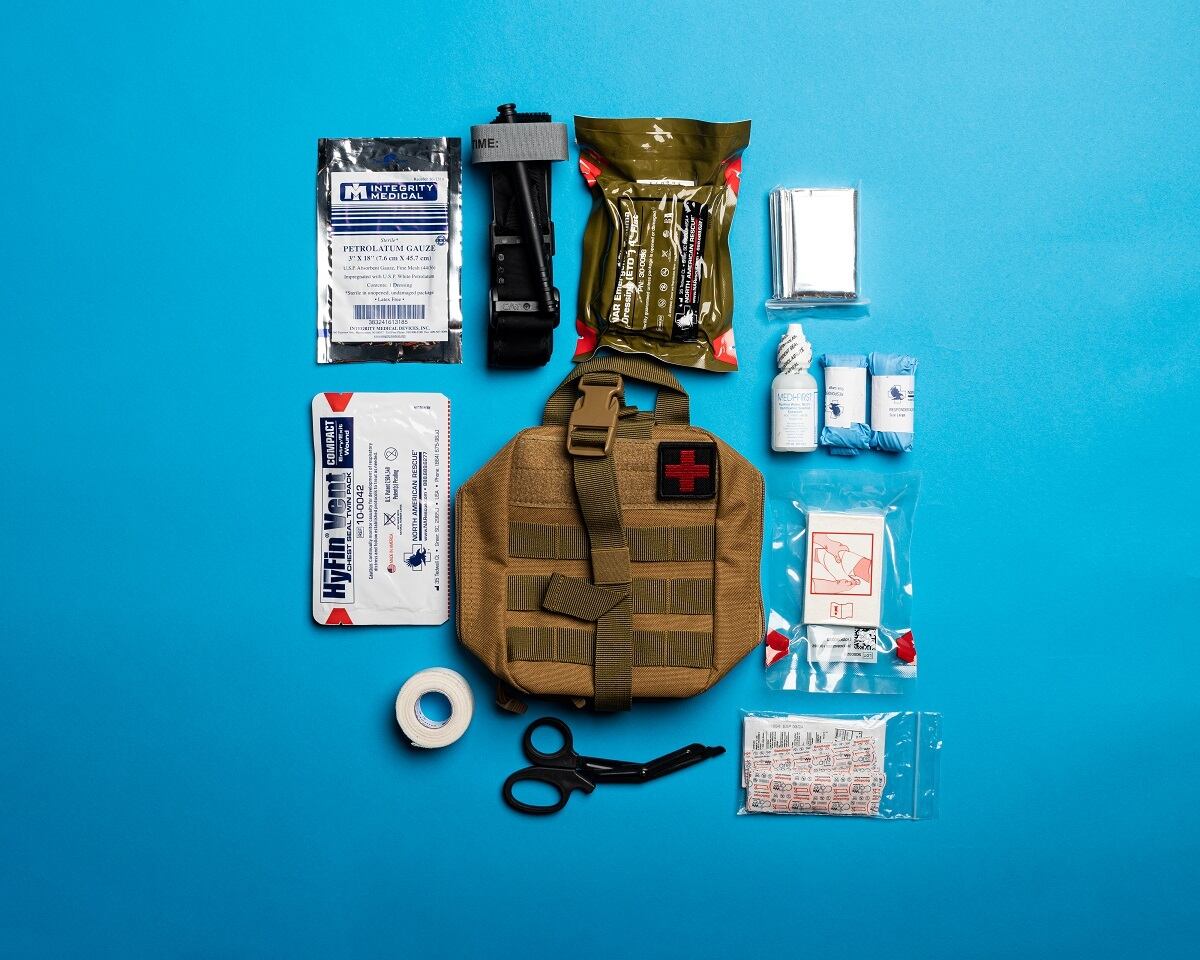
Mini First Aid Kits
Mini first aid kits are the easiest to carry on your person because of their size. While they’re convenient to carry daily or store in various locations, they don’t carry as many supplies as a standard first aid kit or IFAK. Despite not having as many supplies, they are still good to have if you are only expecting to take care of minor scrapes, cuts, and burns. They can work in a pinch at the gun range. Depending on the severity of the injury, they won’t be the best option.
MOLLE First Aid Pouches
MOLLE first aid pouches can come in a variety of sizes and can be larger or smaller than standard IFAKs and mini aid kits. Pre-packed kits carry the widest variety of supplies and allow for customizability. MOLLE pouches come in various sizes and can be small or large depending on your needs. One of the main benefits of these pouches is that they can be attached to any surface that has MOLLE webbing. Many items like range bags, tactical backpacks, and some rifle cases have this webbing allowing you to securely keep your kit where you need it. Pre-packed MOLLE kits can either be more trauma focused, like IFAKs, or standard first aid focused like mini aid kits; it mainly depends on the manufacturer of the kit. Keep in mind that a lot of first aid kit manufacturers that produce pre-packed MOLLE kits will sometimes include an IFAK.
Your needs are going to dictate what kit will work best for you, but if you’re looking for a dedicated range kit, you are going to want something more trauma focused.
Gun range accidents aren’t always severe and need trauma kits, but they can be since firearms are involved. An accident at the range is a scenario you don’t want to occur, but you definitely want to be prepared for.
While pre-packed kits are great, you can just as easily make your own, allowing you to have full control over what’s included in the kit.
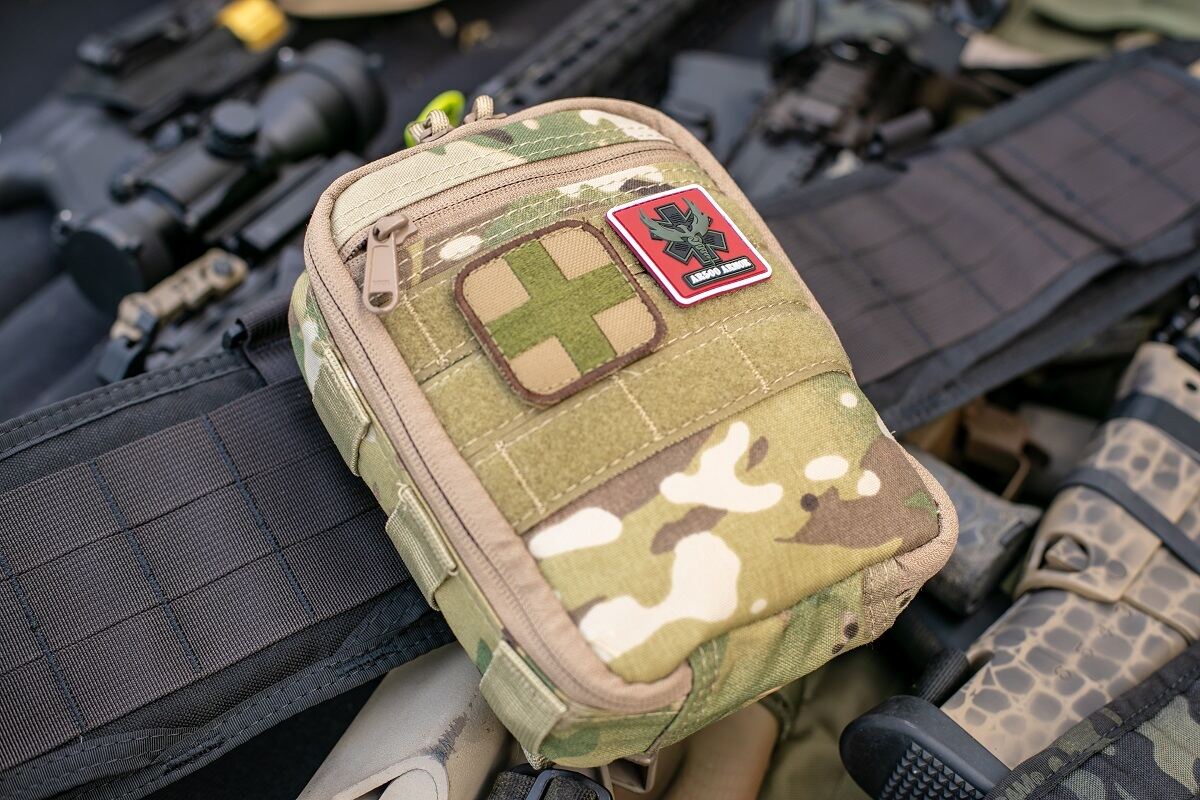

Essential Items for a Gun Range First Aid Kit
Gun range accidents can come in many different forms, requiring an array of supplies and tools to ensure the safety and survival of whoever is injured. While the kits listed above have good supplies, it’s difficult to know what’s necessary and what’s not. We have a guide on tactical gear but for now, here are some crucial supplies and tools to make sure you have in your kit:
Tourniquets
Tourniquets are a device that is designed to be tied around a limb, like an arm or leg, to clamp down on blood vessels to slow or stop bleeding all together. There are a lot of different tourniquet designs available, each being an effective tool to stop blood loss, but one of the easiest and most effective to use is a CAT Tourniquet.
A CAT (Combat Application Tourniquet) is one of the most common and most effective tourniquets available. The CAT is easy to tie around a wounded limb with its large buckle design. While it can be secured and tied tight with ease, the CAT shines because it has a durable windlass that, when twisted, tightens the tourniquet even more. This stops the bleeding entirely and can be secured so that it doesn’t come loose.
Some other good tourniquets are the SWAT-T and the RAT (Rapid Application Tourniquet).
A SWAT-T works similarly to other tourniquets, but instead of having a rotating clamp or locking system, it is a self-locking elastic band. SWAT-Ts can stretch and be used as either a tourniquet, pressure dressing, or a type of all-purpose wrap to treat wounds. It’s usually carried as a backup tourniquet in case your main one fails in the field, making it an excellent addition to have in your kit.
RATs are another good tourniquet option. They have a smaller overall size compared to the CAT and SWAT-T and can be applied with one hand if necessary. With its locking mechanism, it is one of the simplest tourniquets to use. Their smaller size of them allows them to be set at different angles that other tourniquets may not fit.
While these are all great options to keep in your range aid kit, it’s important to familiarize yourself with the workings and instructions of whichever tourniquet you go with.
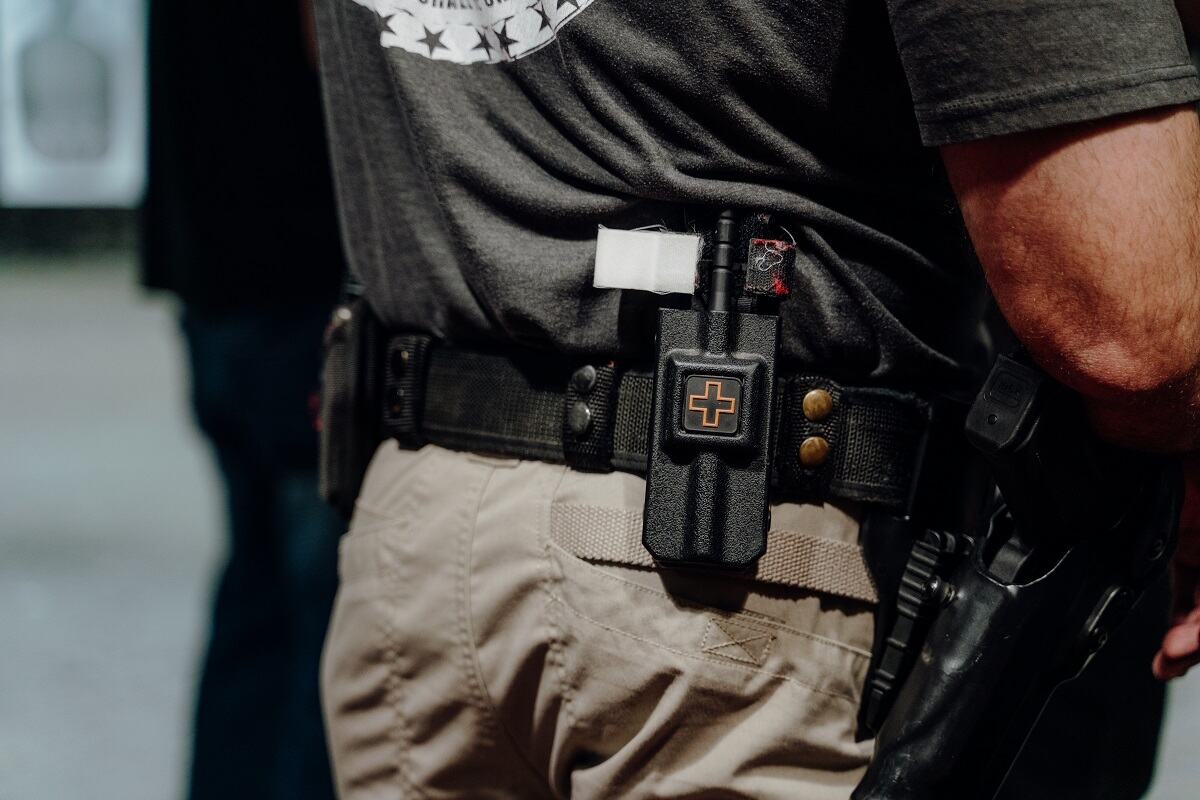
Pressure Bandages
A pressure bandage is another essential item to have in your first aid kit. They work by applying pressure to a wounded area to control and stop hemorrhaging. These bandages have some elasticity in them, so they can be stretched to apply more pressure as you continue to wrap the bandage over the wound (think of the SWAT-T from earlier). Some bandages have Velcro on them in certain locations to help lock in the bandage once it’s pulled tight.
While pressure bandages are good for deep cuts and other wounds, they aren’t as effective for arterial bleeds. While they can help in slowing down blood loss, a tourniquet is a better option for arterial wounds.
Chest Seals
Besides a tourniquet, chest seals are one of the most crucial supplies to keep in your kit. A chest seal keeps air, or any other contaminates, from getting into a penetrating chest wound.
When you breathe, your chest expands causing other muscles, organs, and bone structures to move to allow the inflation of your lungs. When this occurs, the expansion and contraction of the body allows air to enter the chest cavity.
Any additional air that enters the chest cavity can put excess pressure onto other organs, preventing them from working properly. Applying a chest seal prevents this from occurring. Internal bleeding also causes unnecessary pressure. Fortunately, chest seals have valves that allow the blood to vent while preventing outside air from flowing in.
The HyFin Vent chest seal from North American Rescue prevents air from entering the wound when inhaling while allowing air to escape when exhaling. It has three vents channels that allow blood and air to escape while also serving as a backup vent in case any of them become clogged or blocked.
Additional Gear
Besides everything mentioned above, you’ll also want to have compressed gauze, trauma shears, and penny cutters included in your kit.
Compressed gauze can be packed into wounds. Deep wounds, like that from gunshots, can be packed with gauze to keep them from bleeding excessively. Gauze is very absorbent and can be compressed to be packed into wounds deeply. The more space they can take up in a wound channel, the better they’ll be at stopping the bleeding while keeping any debris out.
Trauma shears are like scissors, but they are specifically designed to cut away clothing that may get in the way of a wound. Think about it like this: if someone was shot in the chest or shoulder, it would be incredibly painful for them to move to take their shirt off, and doing this puts them at risk of taking more damage by moving the wound. In cases like this, trauma shears come in handy, since it’s better to cut away any material rather than removing the garment.
A good way to test your trauma shears is to try cutting a penny. If they can cut through a penny, they can cut softer metals like zinc, silver, and gold, for example. If jewelry is crushed in an injury, it causes severe damage to the area it is worn. These cutters allow you to cut off the ring or other jewelry, allowing the area to be treated. If needed, they can even cut through belts and other thicker materials like denim, leather, and canvas.
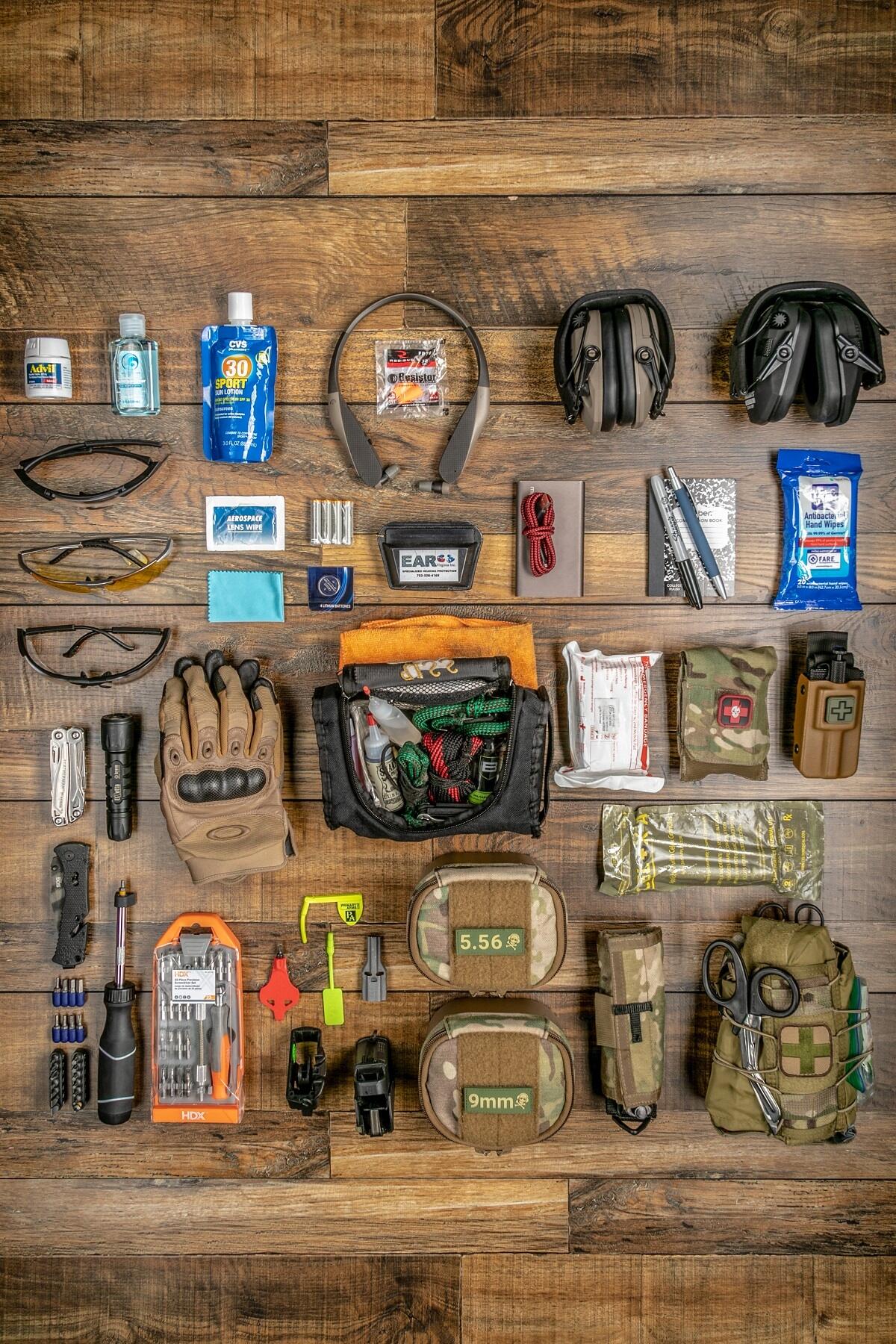
Storing your supplies
Even if you have the best tools and supplies for the job, your first aid kit isn’t going to be that great if you don’t have a good pouch to keep everything in. Luckily, there’s a lot you can do to store and organize your kit.
We touched on MOLLE pouches previously in this article, but we can’t recommend their versatility enough. MOLLE pouches come in different shapes, sizes, and colors, and can’t be easily stored in range bags, rifle cases, backpacks, and cars. With their mounting system, they can be attached to any surface that has MOLLE webbing, making them easily to attach to most tactical bags.
You don’t have to use MOLLE pouches, though. Other companies like North American Rescue, Blue Force Gear, and MyMedic offer different pouches, boxes, and bags to store your kit in. Which one you get is going to depend on your needs, but make sure whichever one you get is large enough to fit all your supplies and sized right to store it where you want.
When it comes to organizing your first aid kit, it’s up to you to store it how you deem fit. A general guideline to follow is to keep the items you’ll need first towards the front or top of your kit. Supplies like your tourniquet, trauma shears, and chest seal should be the first thing you see when you open your kit, since in a trauma scenario, you’ll want the easiest access to these items.

Resupplying
Whenever you use any of your first aid supplies, it’s a good idea to replace them in case they are needed again at a different time. It’s important to check and see if any of your gear has an expiration date. Bandages and other items with adhesives will expire in a few years, so keep this in mind if you plan on keeping these first aid kits over long periods of time. Since supplies need to be replaced every 3-5 years as a general precaution, resupply kits are available to quickly get everything you need.
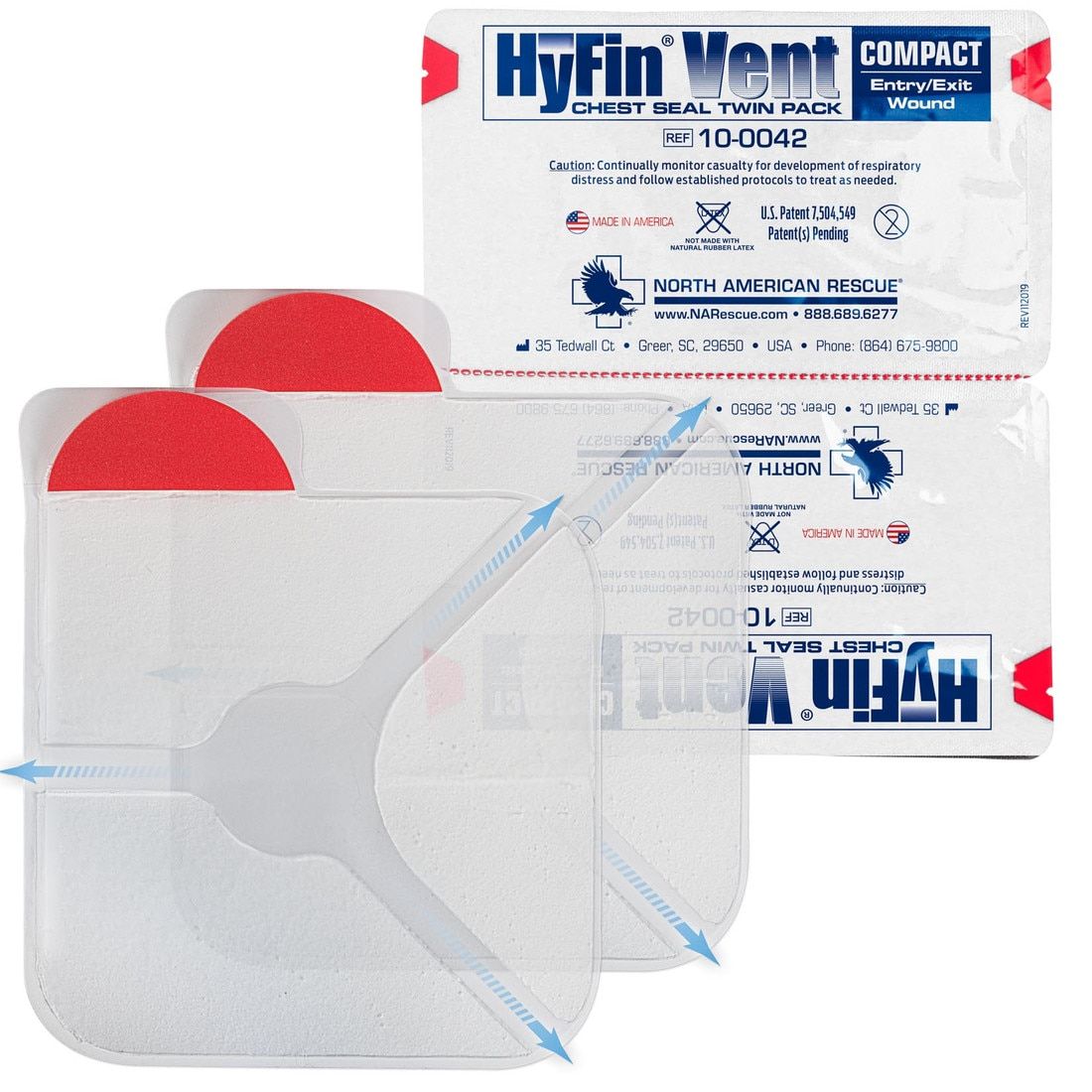
Conclusion
The gun range can be a fun place to train and have fun with friends and family, but you never know when you or someone else is going to have an injury, so it’s important to be prepared for whatever might happen. As we already covered in our Guide to Guns for Self-Defense safety is paramount to being a gun owner.
Just as there are learning courses for the range like carbine, pistol, and concealed carry courses, taking a trauma medical course is the best way to become prepared for a range incident. It’s unlikely for civilians to be in a gun fight, but most will see accidents and injuries in their day to day lives. Whether for treating others or yourself, having a first aid kit dedicated to use at the gun range is an excellent way to stay prepared.
Remember to always practice strong gun safety when at the range; this will minimize any risk to you or others. If you’re ever faced with an injury at the gun range, don’t panic. Having your first aid kit allows you to help where you can but remember to call 9-1-1 so emergency medical professionals can take care of the rest.



